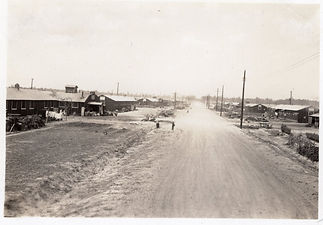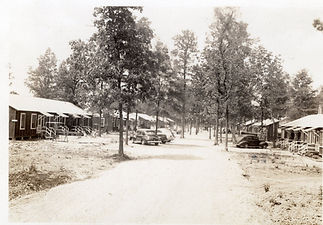
Mioko Eya Chambliss
Her Story of Japanese Internment Camps, Discrimination, Family, and Perseverance
On the wagon ride to the Blackwell Island Asylum, Bly states “I, as well as my comrades, gave a despairing farewell glance at freedom as we came in sight of the long stone buildings.”
Bly sees the “look of distress on the faces of [her] companions. Poor Women… They were being driven to a prison, through no fault of their own, in all probability for life.”
My dear friend and studio assistant’s mother, Mioko Chambliss, inspired this face. Of Japanese descent, she is an American by birth, and was only 18 years old in February 1942, when by Executive Order she was moved from her home in Gardena, California, and taken to the Santa Anita Racetrack to live in a horse stall.
She was later interned to Rohwer—a 500-acre camp in Arkansas surrounded by barbed wire and armed guards, and she was not reunited with her family for years. Mioko recounted this story to me in great detail when she was in her early nineties.
Bly describes “a woman taken without her consent from a free world...” and argues, “Compare this with a criminal, who is given every chance to prove his innocence.” I could not read this passage without thinking of Mioko. She knows the sting of racism, understands the dehumanization of immigrants in America, and the loneliness and alienation of being held against her will under dreadful circumstances by her own government.
Bly “watched patients stand and gaze longingly toward the city they in all likelihood [would] never enter again. It means liberty and life; it seems so near, and yet heaven is not further from hell.” Mioko understands freedom that seems so near, but could not be further from hell.




(Above) Mioko's high school graduation photo, taken right before her internment. (Below) Mioko in her 90s reading the Washington Post article about her inclusion in The Girl Puzzle.

Images Mioko took of Rohwer. She was allowed one bag of her belongings, in which she snuck a small camera.
Mioko was held at Santa Anita in a horse stall for around eight months while the internment camp at Rohwer was being built, and was then taken to Rohwer for an unknown amount of time. She was able to leave Rohwer after The American Friends Service Committee, a Quaker group, sponsored her to go to college in Maryland. She earned a Bachelor of Science in Chemistry at the University of Maryland in June, 1948. Mioko then followed a lab technician on his way to the University of Michigan at Ann Arbor to work in his chemistry lab.
While conducting research at the University of Michigan, Mioko met a fellow student named Bill Chambliss, who would later become her husband. Originally from Glasgow, Kentucky, Bill convinced Mioko to relocate to his home state after their studies concluded, where they settled into the community of Lexington, Kentucky as a married couple and started their family.
While Mioko was held captive at Santa Anita and Rohwer, Bill fought in World War II. Upon his return, he enrolled in the army intelligence language corps Japanese program. He met Mioko through friends in Michigan because he wanted to speak Japanese with a Japanese person to better his language skills. Their son, Roger, recounts that he remembered Bill's Japanese being even better than his mother's.
The Fulbright Program allowed Mioko and Bill to live and work in Japan on two separate occasions--the first in 1957 and the second in 1966. Each Fulbright fellowship lasted for a year and half. In 1957, the family moved with their first two children, Paul and Anne, while Mioko was pregnant with her third child, James, who was born in Japan. By 1966, their fourth child, Roger, was born and moved to Japan for his first grade year. In the late 60s, the Chambliss family moved back to Lexington where Mioko began her teaching career at Sayre School and eventually Lafayette High School.
In August of 1974, she earned a Master's in Education from the University of Kentucky. Between the summer of 1982 and the fall of 1984, while she taught science at Lafayette, Mioko took continuing education and post-grad courses at UK although it is not clear if she earned another degree during this time.
For additional news about Mioko's inclusion in The Girl Puzzle, find Chuck Jones' article in the Arkansas Democrat Gazette here.
For more about Japanese internment during World War II, read this Deseret News article about George Takei bringing awareness.

While Bill was training in Texas, he wrote his grandmother back home in Glasgow. Published in the Glasgow Times in 1944.


Mioko's faculty yearbook photos from her time as a science teacher at Lafayette High School, between 1980 and 1984.
Building Mioko's Portrait: From Clay to Bronze





This Massive Monument to Women is Quietly Taking Shape in New York City.
These images show us working to situate Mioko's face toward the giant bronze face of President Franklin Roosevelt, located on the south end of the island named for him. His Executive Order sealed Mioko's fate. They face each other to show the inequality of their power, but the equality of their size in bronze and in their humanity.

